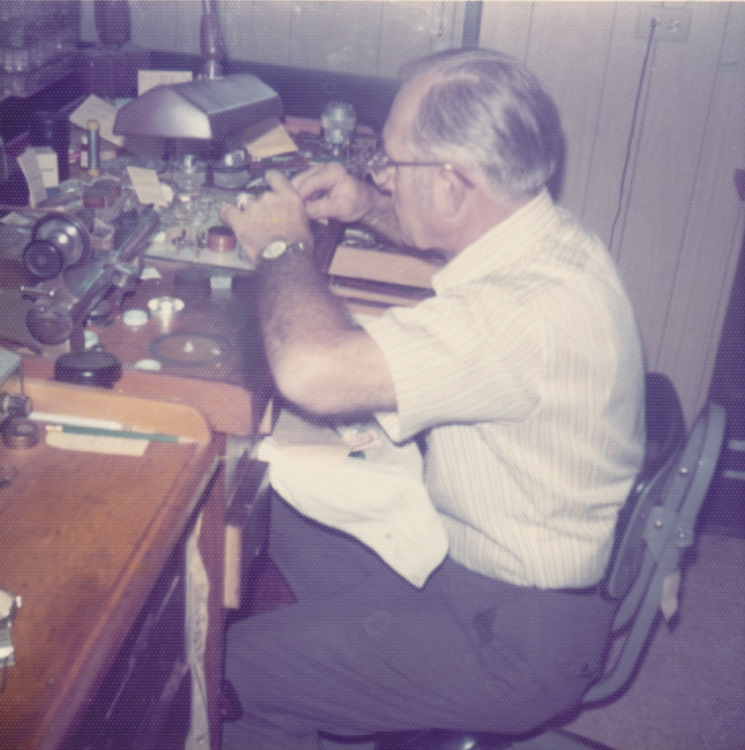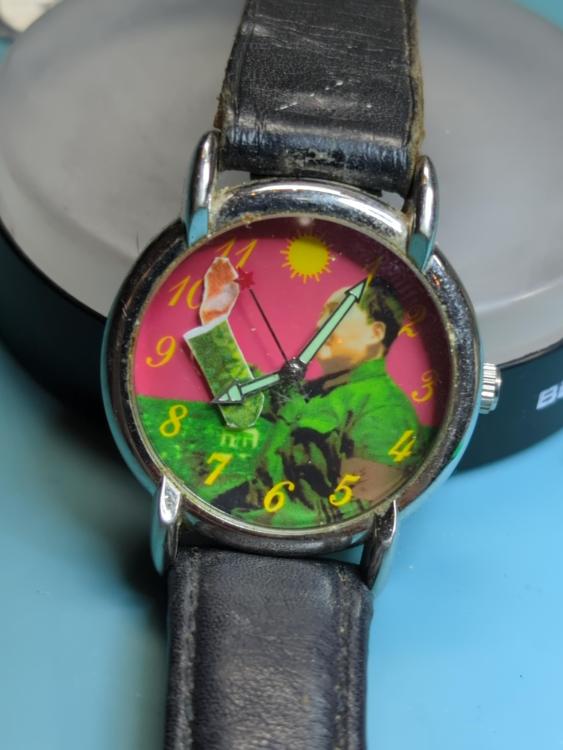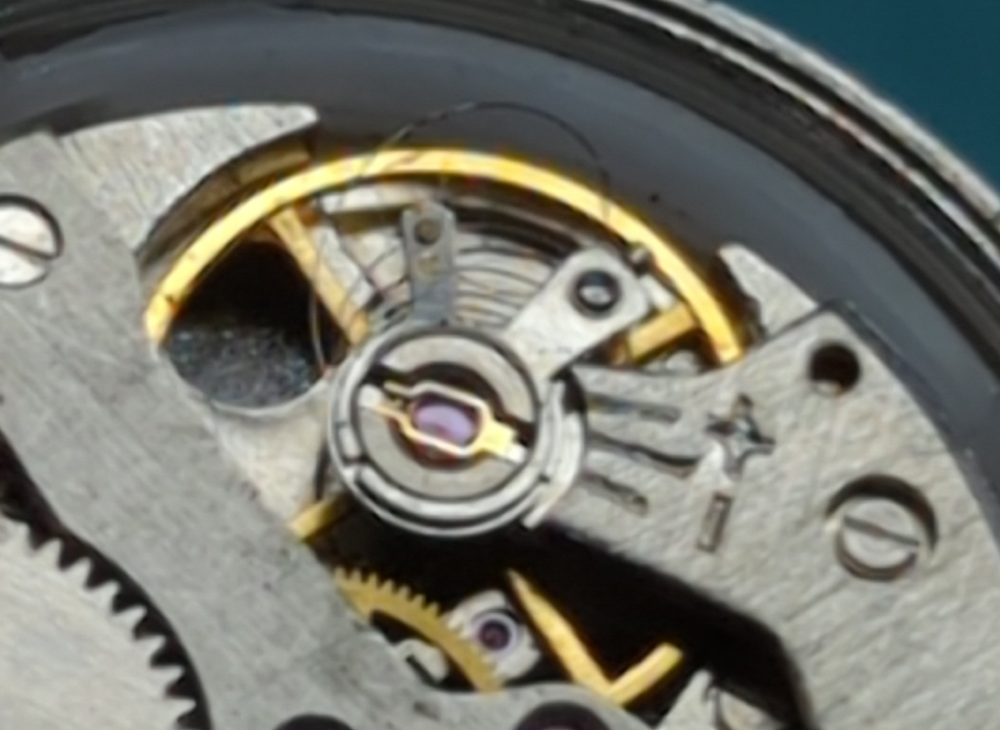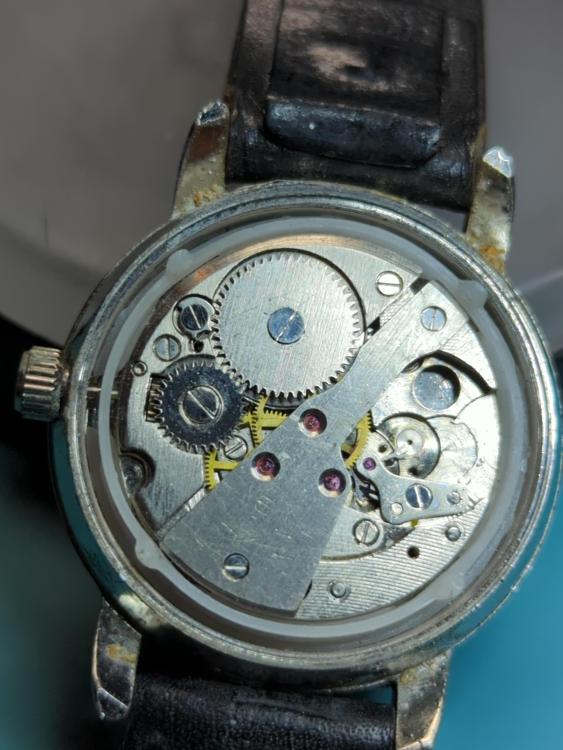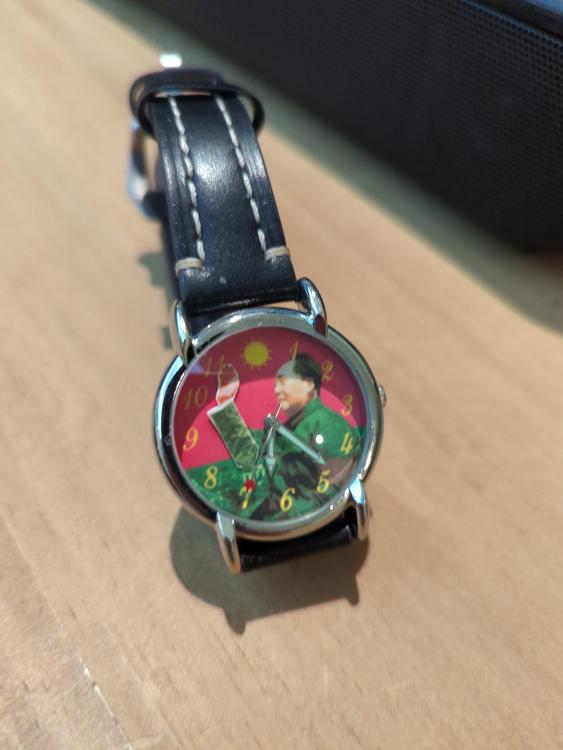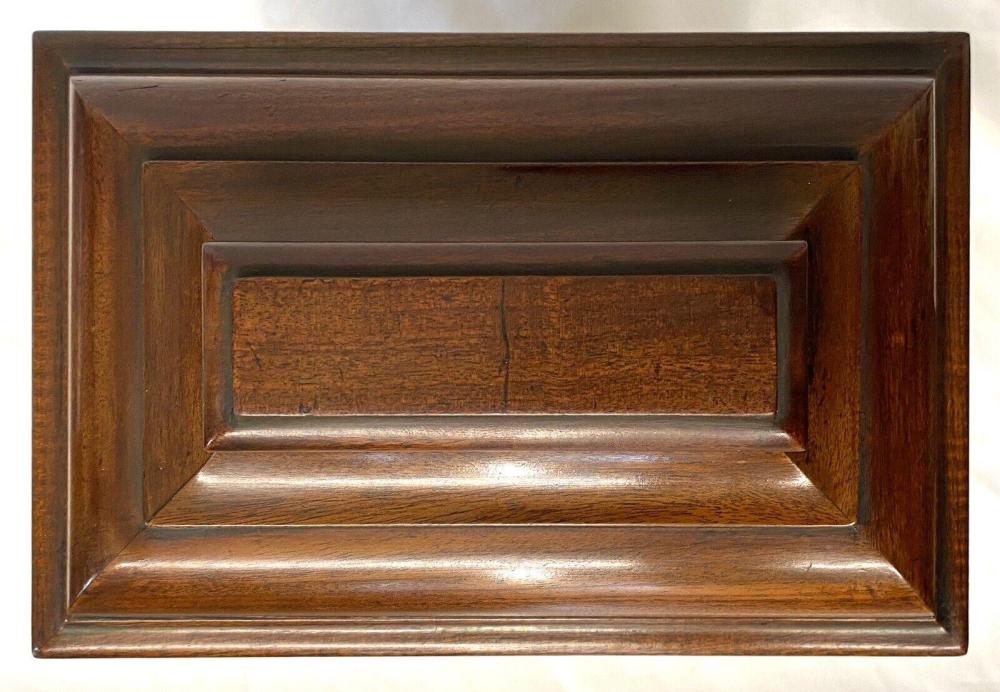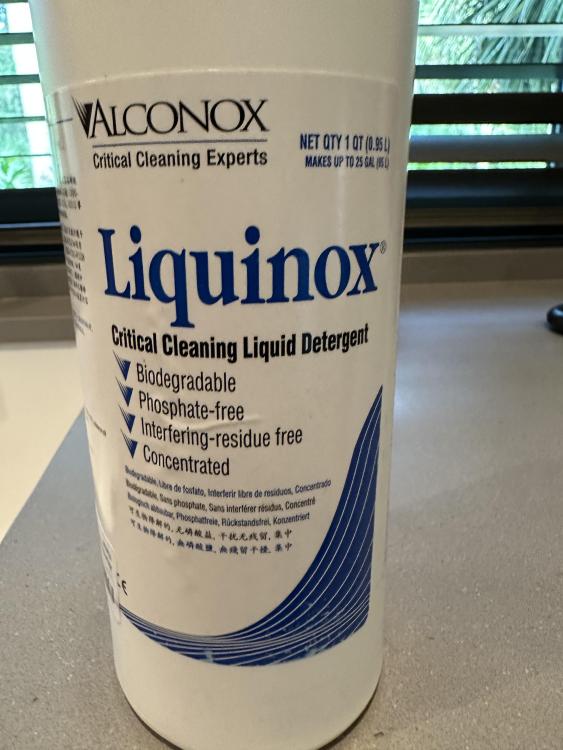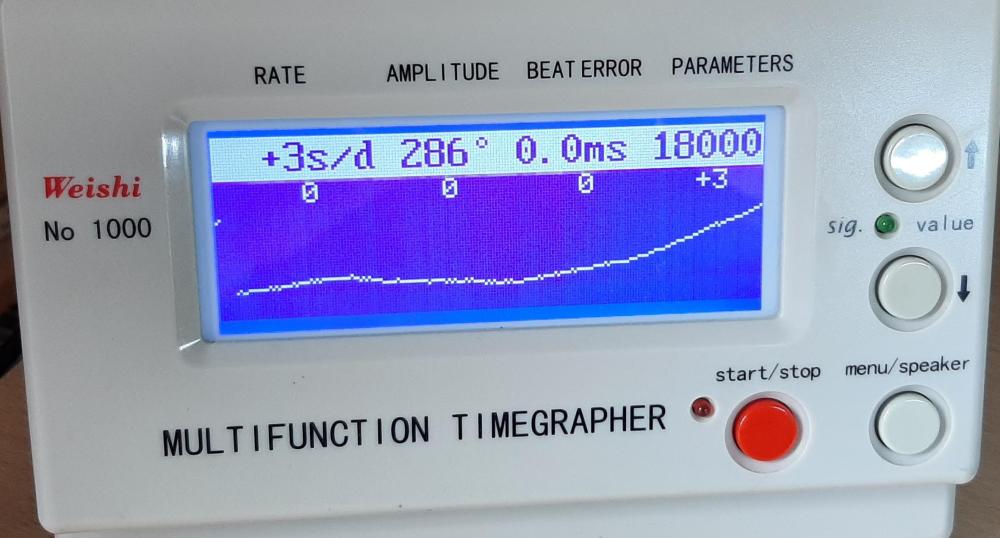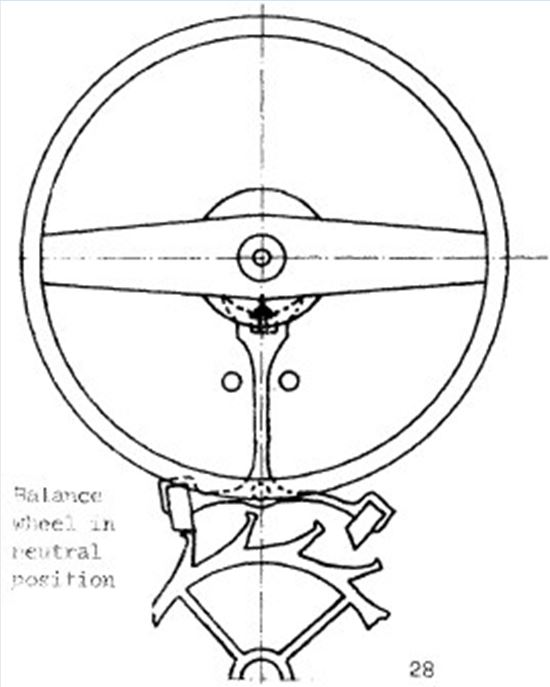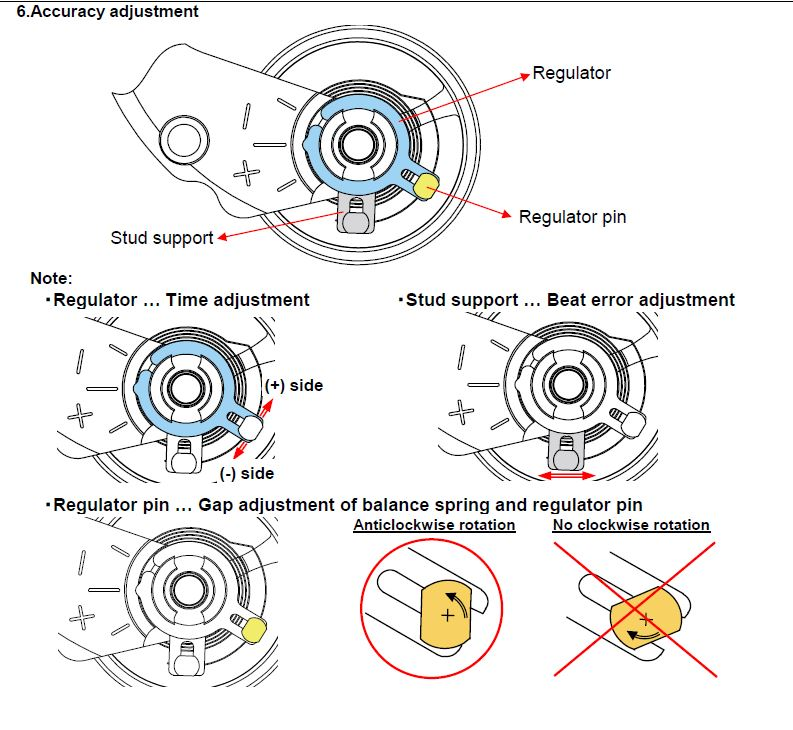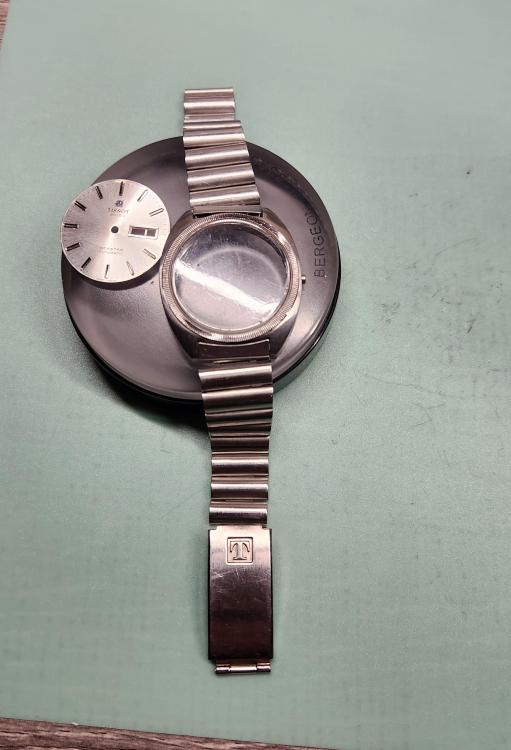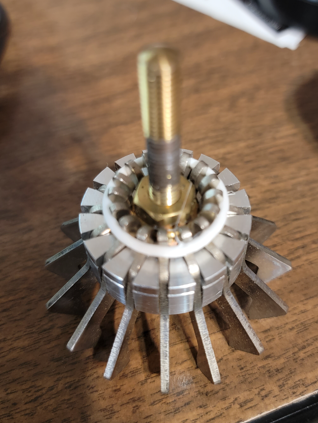Leaderboard
Popular Content
Showing content with the highest reputation on 08/26/23 in all areas
-
8 points
-
Hi all, been a while since I posted a 404, so decided to tackle this non-runner today. The balance spring was mangled so I decided to put on my "big boy pants" and stop avoiding balance hair spring issues and take it on as part of my learning journey. The watch movement is very poor quality, it looks like they machined the parts with a knife and fork, but I was pleased I got it working and it has now become an exam gift for my son who loves the retro corny appeal of the watch, especially the waving hand which is attached to and elongated pivot on the pallet fork. All original parts except the strap and crystal (the old one shattered when I removed it). This watch was bought as part of a job lot so works out to be a whopping £1.62. So here are the before and after shots, starting with the front: Here is the movement, with closeup of the hairspring: And here is the finished watch: Let me know what you think3 points
-
2 points
-
Not sure what you're trying to say, but I guess I wasn't very clear about what I was trying to explain, so perhaps there was a misunderstanding Anyway, I'll try to illustrate the feature of my Weishi 1900 which is helpful when adjusting the beat. At least when the balance has a moveable stud and you're adjusting while measuring. In this picture, we're out of beat. But as you can see the two beats have different colours (blue and yellow). Now, after having moved the stud we can see that the direction was correct but shot over the target. If the lines had been the same colour, it would have been a little more difficult to tell. Admittedly, you can sometimes see the lines crossing each other while adjusting, but the colours still make it easier. Not critical, but nice to have. So, perhaps a feature you could implement in the PCTM app!?2 points
-
What we have here is what is known as a Marriage in the trade. That means a clock case and movement that never started out as one. The case and movement have been altered to fit. But this has a slight difference. It is a three parts marriage because the dial never started out to fit the movement this is because of the two winding holes. 1 The case as you can see has part of the bottom cut away to accommodate the length of the pendulum. This tells you right away nether were made to fit each other. The top of the case has been altered, instead of signs of a handle it has had a piece of wood put inside the top you can see the grain doesn’t match. 2. Movement this in unfinished, It is more likely an apprentice piece. It is easy to see the intention was for the end result to be a strike. If it was to be just a timepiece the design of the train would have been different so the winding arbor would have been at 6 o’clock and not at 3. 3 Dial this is a very nice dial and dates around 1760 the hands are also in keeping with the dial. Due to the lack of photos I cannot see how it has been adapted, but I can assure you it has been altered. See what I mean by the top. Thanks for participating and I think you all deserve a bag of peanuts each.2 points
-
I'm curious about how did the repair go? The reason I'm curious is I saw this interesting video on YouTube apparently another less than satisfied customer.2 points
-
one of the problems with visual observation is that it also depends on the safety features. In other words there is a procedure to verify things are correct you check various clearances first and then you look at the pallet depth so even though the depth may look outstandingly huge for that particular watch it may be just fine depending upon the safety features.2 points
-
I’m almost out of L&R so just for fun I’m trying a product Alex Hamilton has discussed - Liquinox Critical Cleaning Liquid Detergent. I like the idea it isn’t ammoniated, have no trouble dumping down the sink and reduces cost. Alex mentions it is so inexpensive it is affordable to use fresh product with each use…It is only a 1 percent solution. The quart I have will last forever… So far it is far better than Elma/water/Iso, where I had the trouble getting rid of Molycote. I’ve been using a Pearl machine with L&R for the movements and Elma in the ultrasonic for case parts but I’m considering ditching the Pearl altogether…YMMV1 point
-
one of the problems with watch repair is is a lot of stuff you have to remember to check and do. On vintage watches you always want to check the roller jewel/impulse pin to make sure it's not loose. For variety reasons the shellac goes bad with time or can go bad and taken fallout it would really be nice if you could find the original one. So yes it can be replaced you just need to figure out what size it is it does have to be a proper size to fit the slot of the pallet fork then some tools are required to heat up the shellac to lock it in place.1 point
-
First of all this has had a service not that long ago. The movement is clean and the steel pins are new. From the photos I can see that there is a lack of oil on the escape wheel and the pallets. Make sure you have oiled all the pivots first, then remove the pallets and let it run down. There isn't that much power on as the fusee cone has most of the chain on it. Never use an ultrasonic on clock of this age. Check the two screws that screw the pallets to the crutch, if they are not tight they will cause a poor action enough to stop the clock. Are you sure it is in beat and that the wall is flat up against the back of the case. Clock movements that are clean usually mean trouble so look for worn holes, bad pivots, make sure all the wheels run true and check all the teeth. Barrel and fusee holes and pivots I know they are big but check for roughness and fitting. Look at the chain are all the links free and in good order. The spring should be removed so a good mainspring winder is needed so you can check it. I t could be warped or tired.1 point
-
Anyone who knows about clocks wouldn't buy it. I wouldn't give it house room £300 would be about right.1 point
-
Thanks Mike, great resource. I have a 6349a movement turn apart with missing pieces that, one day, I'll try to restore it .Since I have a 6309a movement laying around, that might turn to be a donor, since plenty of pieces are the same according to julesborel. Sorry for the reply to a several-months old thread.1 point
-
@Waggy somehow this popped into my YouTube feed, it’s not a tutorial but does show the end to end making of a strap. Tom1 point
-
yes I was noticing the same problem but the same individual who gave me that gave me another link which I see as already been posted. sso apparently this is the new improved site to replace the other one that is no longer in existence. It's one of the unfortunate problems the Internet one minute it's there in the next minute could be gone and certain sites like this are extremely useful.1 point
-
Just to add the conclusion. I pulled both pallet jewels out a touch, and fixed the problem. The trace is far from flat due to gear wear, and there's variation in other positions, but I'll wear it for a day, and see how it averages out. We sometimes become too obsessed with the timegrapher plots, but it's real life wear performance that matters. I think @JohnR725 would agree with that?1 point
-
"is it correct"? - I highly doubt it. I may not know clocks well, but I know several things about it which are incorrect. "and if not what is wrong"? - Firstly: the price. The price seems rather wrong. Secondly: I'm going to say using sub par woodworking skills and probably also a shoehorn to squeeze this...um...er..."sterling" example of the clockmaker's craft into a much smaller case. "and what is it called"? - 'abomination' seems rather harsh. How about 'travesty'?1 point
-
Does Liquinox remove rust and brighten tarnished metals?1 point
-
no that's not how it works at all. The stud holder holds the end of the hairspring. The stud holder allows you to rotate the entire balance wheel and put it in beat it shouldn't put any tension on anything. otherwise without a movable stand holder if you Move that end of the hairspring you have to move the other end by rotating the collet which is why they have a movable study holder makes so much easier. How much some pictures this is what you're trying to do. No hairspring is shown unfortunately but then that would've made the picture harder to see. In beat is when you have the eight alignment of the roller jewel in the middle of the pallet fork between the banking pins and escape wheel on the other side of the position it is in. Oh and ideally it's not an American pocket watch with movable banking pins because that changes things a little bit you can end up with people shifting both the overall the lead then that messes up things so ideally it's an invisible alignment between the roller jewel and having the pallet fork perfectly centered is what you're trying to do then even those is for a newer watch using the etachron system which I do find amusing because Seiko uses it and they get to do that because they hold the patent for I believe the regulator pins in the start patent is held by the Swiss. In a case here's a picture of how all that works. Then the spacing between the stud holder and the regulator of courses determined by regulating the watch.1 point
-
Here is my latest. A Tissot Seastar with a 2571 (US 2591 actually) automatic with day-date complications. Actually came in pieces (as pictured below) and I managed to complete a reassemble and source several parts needed. I will write up the restoration on another thread soon enough. Still need a thorough clean and lube service. The 37mm case is pretty large on my small wrist. 42mm lug to lug. With this movement and the dial-hands types I think this is a late 70s model. Really like the bezel...maybe a little Rolex-ish style wise? then after pix...1 point
-
It kinda, sorta, looks, almost like what it pretends to be, but I've seen better reproductions. For example. https://www.ebay.co.uk/itm/145216604291?chn=ps&norover=1&mkevt=1&mkrid=7101533165274578&mkcid=2&itemid=145216604291&targetid=4585169652812023&device=c&mktype=&googleloc=&poi=&campaignid=412354547&mkgroupid=1305120599331881&rlsatarget=pla-4585169652812023&abcId=9300541&merchantid=87779&msclkid=b06d41843dcc192b07e4256cb967727e Now I have to be really clear here, am I in line to win a packing peanut or the seed of a subtropical legume? Its important, because I'm allergic to packing peanuts, they bring me out in a cold sweat every time I end up accidentally spilling them all over the floor.1 point
-
1 point




